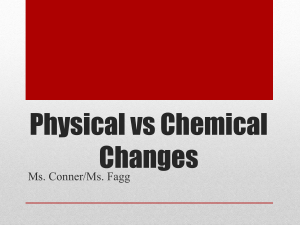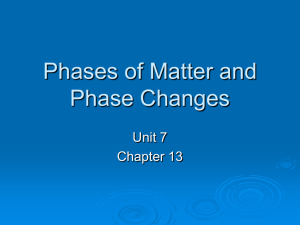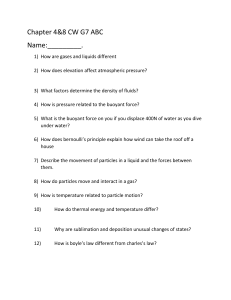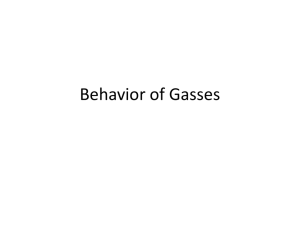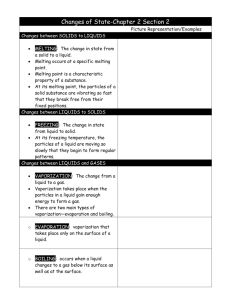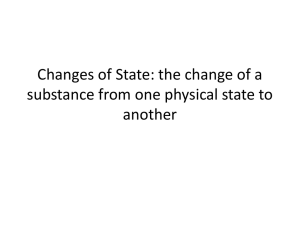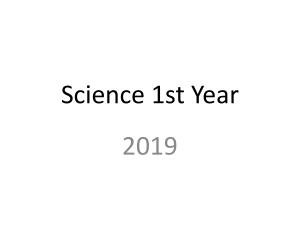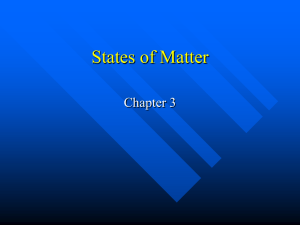Chemistry ch 14B SLG
advertisement
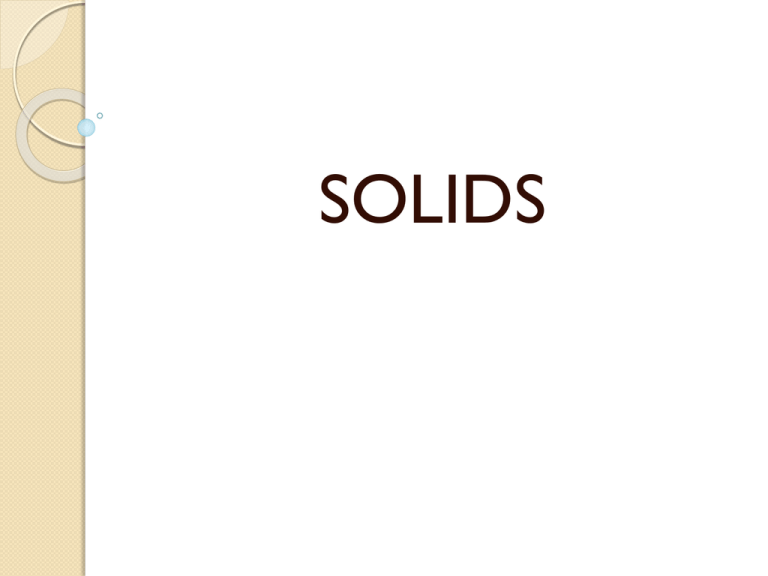
SOLIDS Properties Solid particles have fixed positions Particles are very close together Solids have fixed shapes and fixed volumes Usually exist in crystalline form Solid Crystals Can be very brittle, like salt Can be very soft, like lead Changing States Deposition (Frost forming) ◦ Molecules in the gaseous state become part of the surface of a crystal Sublimation ◦ Process in which a solid changes directly into a gas ◦ Exothermic process ◦ Energy released in decomposition is equal to the energy required for sublimation Freezing ◦ Change in state in which a liquid becomes a solid as heat is removed ◦ Exothermic process releases energy Melting ◦ The change in state in which a solid becomes a liquid by adding or changing pressure ◦ Melting point and Freezing point are the same for pure substances LIQUIDS Particles can move easily past each other Are fluids Have fixed volumes, but take the shape of the container placed in Liquid Forces Cohesion ◦ Attraction for each other Water molecules stick each other Adhesion ◦ Attraction for particles of solid surfaces Water molecules do not stick to car wax Combine the two and get capillary action Surface Tension Force that acts on the surface of a liquid and that tends to minimize the area of the surface Liquids tend to decrease their surface area to the smallest possible size Why liquids for spherical shapes (Drops), smallest surface area for a volume Changing States Condensation ◦ Gas becomes a liquid Evaporation ◦ Liquid becomes a gas ◦ Endothermic process ◦ Boiling Point- temperature and pressure when a liquid and gas are at equilibrium


